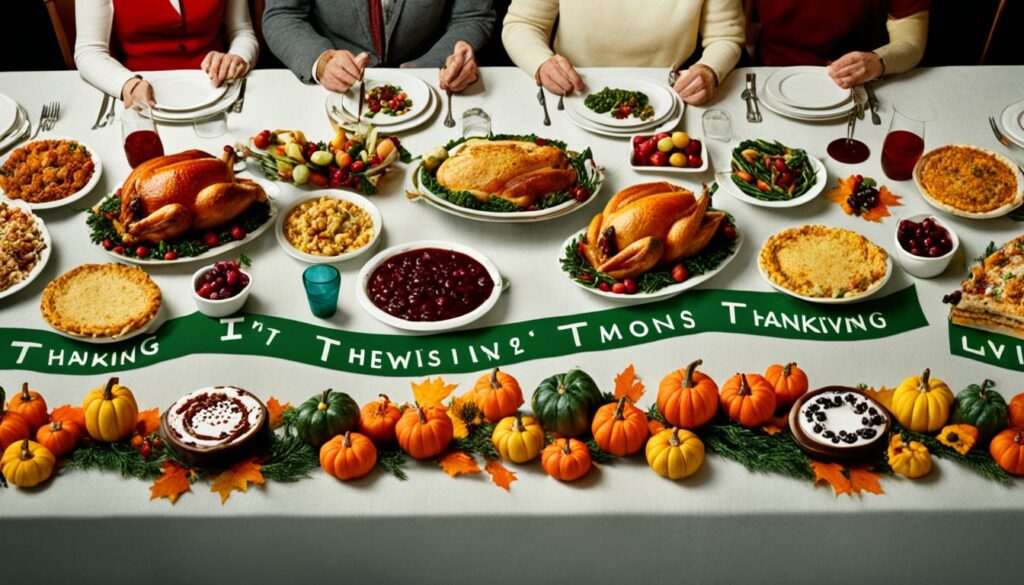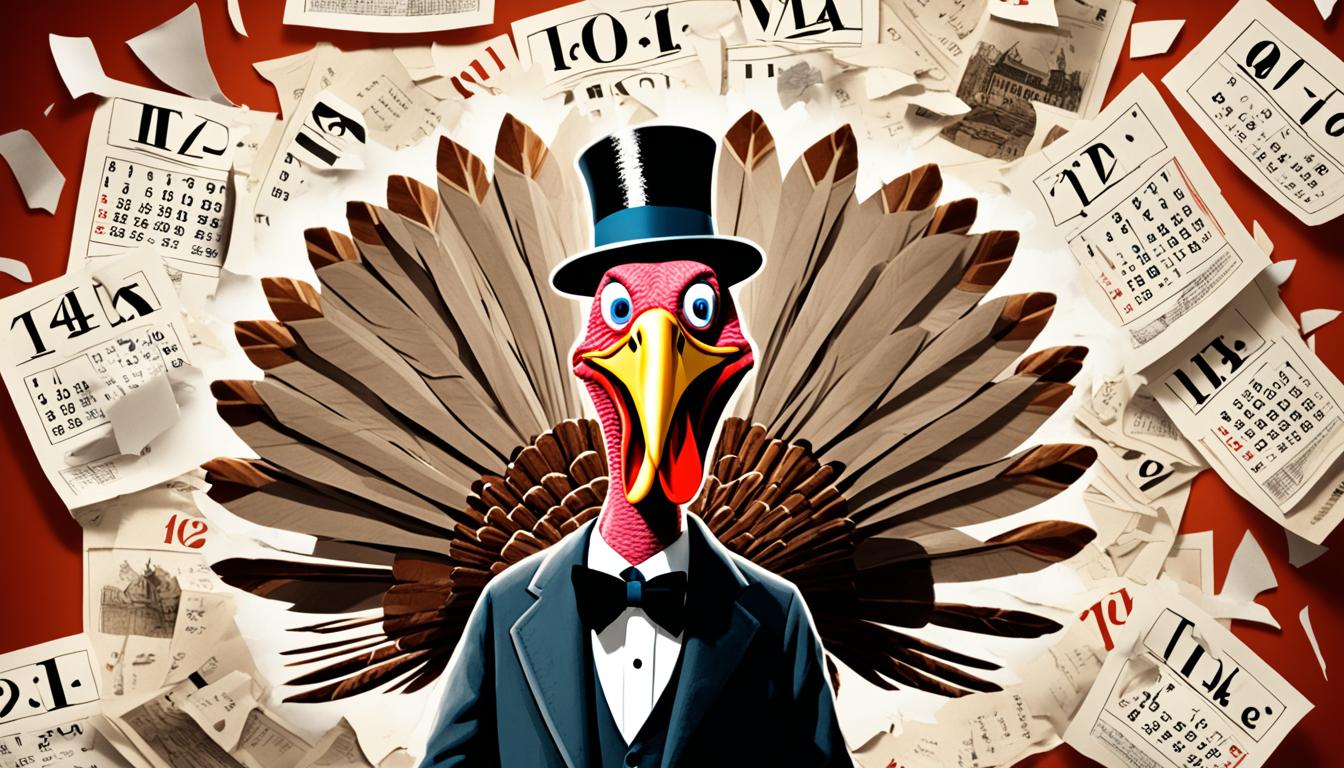In 1939, President Franklin D. Roosevelt made a big change to American traditions. He moved Thanksgiving from the last Thursday of November to the second-to-last one. This was done to help the economy by making the Christmas shopping season longer during the Great Depression.
This change caused a lot of debate across the country. It affected people’s holiday plans, college football games, and even calendars. Some people liked the new date, while others stuck to the old tradition. They even started calling it “Franksgiving.”
People had different opinions about the change, depending on their politics. Democrats were often in favor, while Republicans were against it. This showed how hard it can be to change long-standing traditions, even for economic reasons.
Key Takeaways
- FDR moved Thanksgiving to the second-to-last Thursday of November in 1939
- The change aimed to boost retail sales during the Great Depression
- The shift affected holiday plans and college football schedules
- “Franksgiving” became a popular term for the changed holiday
- Public opinion was divided, often along political party lines
- The move highlighted tensions between tradition and economic needs
The Great Depression and FDR’s Bold Decision
The Great Depression was a tough time for America. President Franklin D. Roosevelt had to make big decisions to help the economy recover. One of those decisions was to move the date of Thanksgiving. This change was meant to increase retail sales when they were needed most.
Fred Lazarus Jr., a well-known figure in retail, suggested this change. He believed it could extend the Christmas shopping season. Roosevelt agreed. In August 1939, he announced that Thanksgiving would be on November 23rd, a week earlier than before.
This move was important for a reason. At that time, stores didn’t decorate for Christmas until after Thanksgiving. They also didn’t start selling holiday items early. By moving the holiday, Roosevelt gave shoppers an extra week to buy gifts. He hoped this would help the economy recover.
This decision was part of FDR’s plan to help America get back on its feet. He knew that more people spending money could create jobs and improve the economy. Moving Thanksgiving was a creative way to try and achieve these goals during the hard times of the Great Depression.
FDR’s Thanksgiving Date Shift: Impact and Controversy
FDR’s decision to change Thanksgiving’s date changed American life a lot. It affected millions of people’s plans for the holiday. Football games, parades, and church services had to be rescheduled.
Schools had a hard time adjusting their calendars. Family gatherings became harder as people tried to find a date that worked for everyone.
Not everyone was okay with the change. Some states refused to switch dates. This led to a split in Thanksgiving celebrations across the country.
In 1939, 23 states and Washington D.C. went with the new date. But 22 states stuck with the old one. Colorado, Mississippi, and Texas celebrated both dates, showing the big divide.

The change caused a lot of debate. Critics said FDR made the decision without thinking it through. Comedians had a field day with the confusion. Radio shows and cartoons made fun of the mix-up.
The controversy even made international news. Some countries wondered about the stability of American leadership during this tense time.
Patriotic celebrations took on a new tone as Americans debated tradition versus economic needs. The debate showed how much Thanksgiving meant to people as a symbol of national unity. It also showed how economic pressures could change even the most beloved holidays.
The Aftermath of “Franksgiving”
The split Thanksgiving, known as “Franksgiving,” lasted from 1939 to 1941. Atlantic City mayor Charles D. White called it that. By 1940, 32 states celebrated on the new date, while 16 stuck with the old one.
Many thought the new date would help retail sales. But, the 1941 Commerce Department found no big increase in spending. This made people rethink moving Thanksgiving.
Cartoons and radio shows started making jokes about the split holiday. This showed how people felt about it. It also showed how important Thanksgiving is in American life.
The debate showed the date change wasn’t a success. It didn’t bring in more money and caused confusion. So, people started to think about going back to the original date.
Congressional Resolution and Standardization of Thanksgiving
In late 1941, Congress made a big move to settle the Thanksgiving date debate. They passed a joint resolution making Thanksgiving the fourth Thursday in November. This move aimed to unite American traditions. President Roosevelt signed it on November 26, 1941, starting a new chapter for the holiday.
The change came after realizing the earlier date didn’t help the economy as expected. Most states quickly updated their laws to follow the new national date. This move towards standardization brought consistency across the country. It ended the confusing “Franksgiving” period that had split the nation.
Texas was the last state to accept the change. They had their last last-Thursday Thanksgiving in 1956. This shows how some traditions were deeply ingrained. The standardization of Thanksgiving is a prime example of how American traditions have changed over time. Now, we celebrate Thanksgiving on the fourth Thursday of November, uniting the nation in gratitude.

Leave a Reply